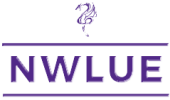Commercial, Industrial & Civil Projects
Commercial, industrial, and civil projects each present a unique set of challenges and considerations. A Principal Planner, when working on these projects, serves a central role in harmonizing economic development goals, infrastructure needs, urban design considerations, and environmental stewardship.
Detailed Layout of What a Principal Planner Does When Working on Commercial, Industrial & Civil Projects:
Pre-Application Phase:
- Stakeholder Consultation: Engage with developers, architects, business owners, public works officials, and others to gain a comprehensive understanding of the project’s scope and objectives.
- Preliminary Site Analysis: Evaluate potential sites for compatibility with the proposed use, infrastructure availability, environmental sensitivity, and surrounding land uses.
- Guidance: Provide insights into local zoning codes, design guidelines, and other pertinent regulations.
Application Review:
- Document Assessment: Review all submitted materials, such as site plans, architectural designs, traffic studies, and environmental impact assessments, to ensure completeness.
- Technical Reviews: Coordinate with experts from relevant departments like traffic, environmental, engineering, and utilities for their feedback on the application.
Analysis & Evaluation:
- Zoning & Land Use Compatibility: Assess the project’s alignment with current zoning designations and overarching land use plans.
- Infrastructure & Accessibility: Evaluate the project’s infrastructure needs, its impact on existing systems, and its connectivity to transportation networks.
- Environmental & Safety Considerations: Especially for industrial projects, understand potential environmental impacts and safety concerns. This might include considerations related to hazardous materials, emissions, waste disposal, etc.
- Economic Impact Assessment: For commercial projects, gauge potential economic benefits, job creation, and alignment with local economic development strategies.
Public Engagement:
- Community Outreach: Hold meetings to present the project to the community, gather feedback, and address concerns.
- Collaborate with Stakeholders: Engage with relevant business associations, environmental groups, local agencies, and other interested parties.
- Public Hearings: Attend and present findings at hearings before planning commissions or governing boards.
Recommendation & Decision Making:
- Draft Reports: Prepare detailed reports outlining the analysis, findings, and recommendations regarding the project’s feasibility and conditions.
- Project Approval: Depending on the jurisdiction and project scale, the Principal Planner may make a decision or offer recommendations to a higher authority.
- Set Conditions: If approved, draft conditions of approval that outline specific requirements the developer must meet.
Post-Approval & Implementation:
- Monitor Compliance: Track project progress, ensuring it aligns with approved plans and conditions. Address any deviations or issues that arise during construction.
- Coordination: Maintain open communication with various departments and agencies involved in overseeing different project facets.
- Final Review: Before project completion, conduct inspections to ensure all conditions have been met and the project adheres to all regulations.
Continuous Improvement & Professional Development:
- Policy Refinement: Based on project experiences, suggest updates or refinements to planning policies, especially if emerging challenges or opportunities are identified.
- Stay Updated: Attend conferences, workshops, and seminars to keep abreast of best practices, innovative solutions, and changing regulations in commercial, industrial, and civil planning.
The involvement of a Principal Planner in commercial, industrial, and civil projects ensures that these developments not only meet regulatory standards but also align with broader community goals and aspirations. Their expertise contributes to building sustainable, economically vibrant, and safe environments.
